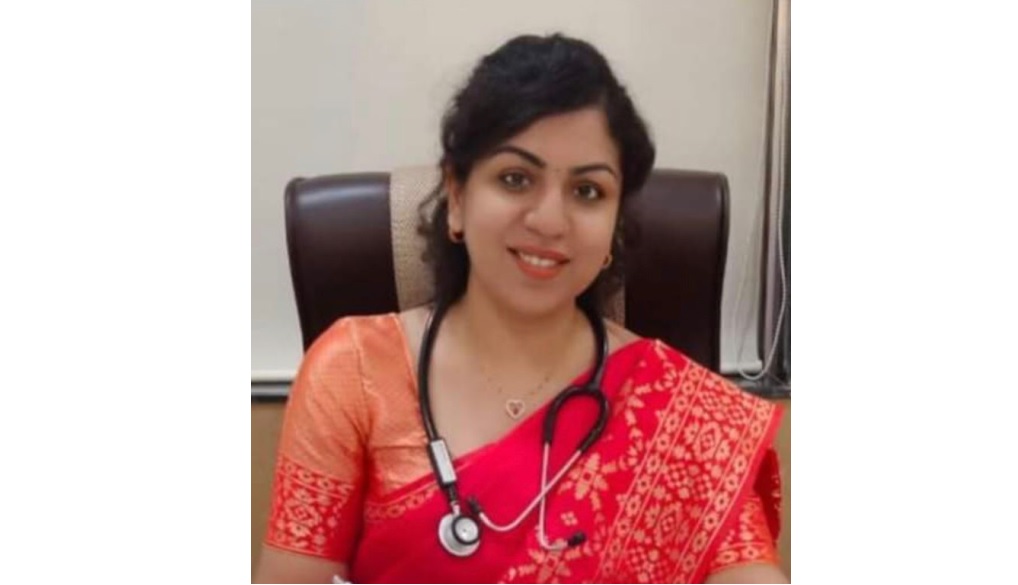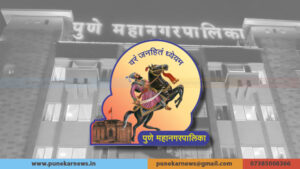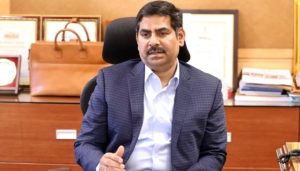Pain-Free Celebrations: Dr Page’s Guide to Enjoying Navratri with Chronic Pain

Dr. Nivedita Page
Pune, 16th October 2023: Navratri is a vibrant and significant Hindu festival celebrated over nine nights and ten days, dedicated to the Goddess Durga. It typically occurs in the autumn, both in the months of March-April (Chaitra Navratri) and September-October (Sharad Navratri). The festival holds immense cultural and religious significance in various parts of India and among Hindu communities worldwide.
Navratri is a time of joy and togetherness, marked by lively celebrations and communal gatherings. However, those who experience chronic pain confront particular difficulties that may make it difficult to make the most of any part of the festivities.
Chronic pain is chronic and lasts for months or even years at a time. It may result from several illnesses, including neuropathy, back pain, fibromyalgia, arthritis, or fibromyalgia. The pain may be somewhat uncomfortable or severe and incapacitating, affecting a person’s physical, emotional, and mental health.
Here are some expert tips on how to manage chronic pain during Navratri:
Preparing Physically and Mentally
- Consultation with Healthcare Professionals
It is essential to get assistance from healthcare professionals like doctors, physiotherapists, or pain specialists. They can offer individualized advice based on a person’s unique chronic pain situation, propose appropriate workouts, and prescribe pain management techniques according to their health status.
- Making Navratri celebration expectations realistic
Setting realistic goals for Navratri and being aware of one’s limitations is crucial. This could entail setting goals for how many activities you’ll attend, scheduling downtime, and knowing when to gracefully step down to prevent pain from getting worse.
- Developing a Pain Management Strategy
It’s crucial to work together with medical professionals to develop an all-encompassing pain management strategy. This strategy may include dosage regimens, complementary treatments (such as physical therapy and acupuncture), and methods for controlling pain while enjoying the festivities.
- Including Techniques for Stress Reduction and Relaxation
Deep breathing, meditation, and progressive muscle relaxation are among the relaxation methods that can be used to reduce stress. Lower levels of stress frequently result in decreased feelings of pain, making Navratri more pleasant.
Navigating Navratri Celebrations
- Selecting Appropriate Events and Activities
It can be advantageous to choose less strenuous activities, including cultural concerts or social gatherings with sitting. Selecting activities that are compatible with one’s level of pain tolerance allows active engagement without taxing the body.
- Importance of Pacing and Conserving Energy
Pacing oneself and not overexerting is critical. Taking breaks and conserving energy throughout the festivities can help in managing pain and preventing a flare-up of symptoms.
- Utilizing Assistive Devices or Aids
Using assistive devices like canes, braces, or ergonomic seating can provide additional support and ease of mobility, enabling individuals with chronic pain to participate in various activities comfortably.
- Designing Comfortable Festive Attire
Selecting loose-fitting, comfortable clothing that does not exacerbate pain or discomfort is key. Prioritizing comfort while maintaining a festive look will contribute to an enjoyable celebration.
Nutritional Aspects of Pain Management
- Exploring Pain-Relieving Food Options
Including meals with anti-inflammatory characteristics, such as vegetables, and fruits, will help you manage pain during Navratri.
- Avoiding Trigger Foods that Worsen Pain
For people with particular chronic pain problems, knowing and avoiding foods that could cause pain or inflammation is essential to a pain-free experience.
- Managing Inflammation Through Diet and Hydration
An anti-inflammatory diet and maintaining appropriate hydration can help manage discomfort and reduce inflammation, making Navratri celebrations more bearable in general.
Here are 5 short tips for healthy fasting while you are enjoying delicious meals this Navratri.
1. To keep your body hydrated and energized throughout your fast, drink plenty of water. Have water with your pre- and post-fast meals if the fast requires complete abstinence from all foods and beverages. Dehydration can occur if you go for hours without drinking any water.
2. Consistently try to eat before your fast. The body can better support itself throughout the day without food with its help. It aids in giving the body strength and vigor. This does not imply that before the fast, one should load their faces with fatty foods. Pick light, healthful foods like fruits, milk, almonds, and so forth.
3. Steer clear of challenging workouts when fasting. A quick stroll can be incorporated, but strenuous exercises like long runs or sessions in the pool should be avoided.
4. Optimize your nutrition when fasting. Therefore, if you’re eating less, the body will place an even greater emphasis on the food’s nutritious value.
5. When breaking the fast, eat healthfully. Always begin with some fruit and a glass of water. This will have a revitalizing impact and prevent an abrupt rise in blood sugar after a lengthy fast. The main course should be a healthy, light dinner.
Incorporating Gentle Exercise and Movement
- Low-Impact Exercises Suitable for Individuals with Chronic Pain
Engaging in low-impact exercises like swimming, gentle yoga, or stationary cycling can improve mobility, flexibility, and overall well-being without causing excessive strain on the body.
- Stretching and Relaxation Techniques to Alleviate Muscle Tension
Incorporating gentle stretching and relaxation exercises can help alleviate muscle tension and reduce discomfort, promoting a more pain-free celebration.
- Mindful Movement and Its Benefits for Chronic Pain Management
Practicing mindful movement, focusing on breathing and body awareness, can assist in managing chronic pain by fostering a deeper connection with the body and promoting relaxation.
Prioritizing Self-Care and Rest
- Balancing Rest and Participation in Navratri Festivities
Striking a balance between participating in festivities and prioritizing rest is essential. Listening to one’s body and acknowledging when rest is needed is crucial for managing chronic pain effectively.
- Creating a Self-Care Routine for Pain Management
Establishing a self-care routine that includes adequate rest, relaxation, and self-soothing activities can significantly contribute to managing pain and enhancing the overall Navratri experience.
- Practicing Mindfulness and Relaxation to Reduce Pain and Stress
Incorporating mindfulness practices and relaxation techniques into daily routines can aid in reducing both physical and emotional pain, leading to a more enjoyable Navratri celebration.
Engaging with a Supportive Community and Resources
- Joining Support Groups for Individuals with Chronic Pain
Connecting with support groups and communities of individuals facing similar challenges provides a platform for sharing experiences, seeking advice, and finding emotional support.
- Seeking Guidance from Pain Management Professionals
Engaging with pain management professionals, attending workshops, or seeking individual counselling can offer valuable insights and guidance on effectively managing chronic pain during Navratri.
- Sharing Experiences and Tips with Others in Similar Situations
Sharing personal experiences and tips with others dealing with chronic pain fosters a sense of community and mutual understanding, offering a platform for learning and growth.
There are several options for chronic pain management- without painkillers and without surgery. Knee replacement surgeries, spine surgeries, and many more can be avoided if specialist advice is taken in time! Reach out to pain management specialists so that you can live your life to the fullest.
(Dr. Nivedita Page is a pain management specialist at Painex Clinic.)








